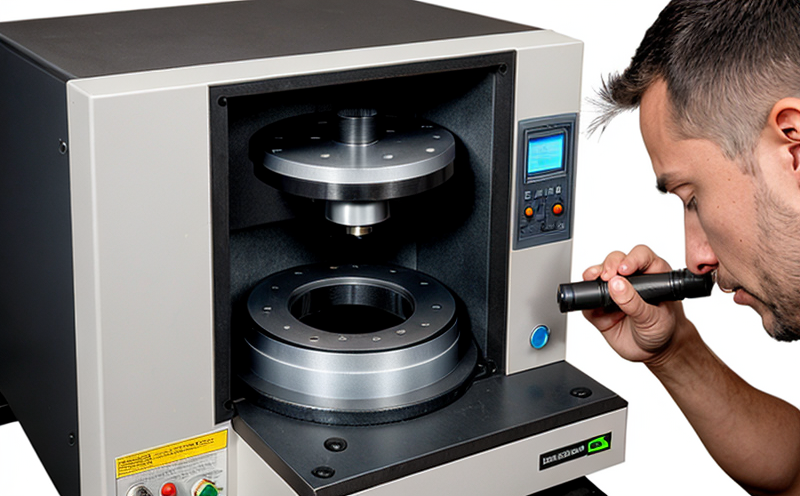ISO 6506 Brinell Hardness Correlation with Metallography
The ISO 6506 standard provides a method to correlate Brinell hardness values with the microstructure and metallographic features of materials. This correlation is essential for quality assurance, R&D, and compliance in industries that require precise material characterization. By understanding how hardening processes affect microstructural changes, manufacturers can optimize their additive manufacturing (AM) and 3D printing techniques to achieve desired mechanical properties.
The Brinell hardness test measures the indentation resistance of a material using a steel ball indenter with a specified diameter under a defined load for a given time. The resulting hardness value is used in conjunction with metallographic analysis to determine the microstructure and its relationship to hardness. This correlation helps identify critical processing parameters that influence material properties, ensuring consistent quality across additive manufacturing processes.
For complex AM parts, such as aerospace components or medical devices, accurate hardness testing and microstructural assessment are crucial for ensuring mechanical integrity and safety. By correlating Brinell hardness with metallography, we can provide detailed insights into the internal structure of materials, aiding in process optimization and quality control.
Our team of experts ensures that all tests comply with international standards such as ISO 6506. We use advanced equipment like optical microscopes and digital image analysis software to capture high-resolution images for precise metallographic examination. This approach allows us to provide reliable, reproducible results that meet stringent industry requirements.
For industries where material performance is paramount, this service offers valuable insights into the relationship between hardness and microstructure. Understanding these relationships enables manufacturers to make informed decisions about process parameters, ensuring consistent quality and reliability in their products.
| Test Phase | Timeline (days) |
|---|---|
| Sample Preparation | 1-2 days |
| Brinell Hardness Test | 3-5 days |
| Metallography Analysis | 7-10 days |
| Result Reporting | 2-4 days |
The correlation between Brinell hardness and microstructure is particularly important for materials that undergo significant stress or temperature changes, such as those used in the aerospace or automotive sectors. By understanding how these factors affect material properties, manufacturers can design parts with optimal performance characteristics.
In summary, our ISO 6506 Brinell hardness correlation service offers comprehensive insights into the relationship between hardness and microstructure, providing valuable data for quality assurance and process optimization in additive manufacturing and 3D printing applications.
Scope and Methodology
- Sample preparation: Cleaning, polishing, and mounting of specimens to ensure accurate testing.
- Brinell hardness test: Indentation with a steel ball indenter under specified load and dwell time.
- Metallographic analysis: Examination using optical microscopes and digital image processing techniques.
- Data correlation: Analysis of hardness values in relation to observed microstructures.
The scope of our service includes the entire process from sample preparation to final reporting, ensuring a comprehensive evaluation of materials. Our methodology adheres strictly to ISO 6506 standards and is validated by rigorous quality control measures.
| Instrument | Description |
|---|---|
| Brinell Hardness Tester | Accurate for indentation hardness measurement of metallic materials. |
| Metallographic Microscope | High-resolution optical microscope for detailed examination of microstructures. |
| Digital Image Processing Software | Analyzes and quantifies metallographic images for precise evaluation. |
The results from this testing process are invaluable for industries relying on high-performance materials. By correlating Brinell hardness with microstructural features, we provide critical data that can be used to optimize processes, improve product quality, and ensure compliance with regulatory standards.
Why Choose This Test
The ISO 6506 Brinell Hardness Correlation with Metallography service is an essential tool for industries where material integrity and performance are critical. Here’s why this test stands out:
- Accurate Material Characterization: Provides precise hardness values that correlate directly with microstructural features.
- Compliance Assurance: Ensures adherence to international standards, enhancing product reliability and safety.
- Process Optimization: Identifies critical parameters affecting material properties, leading to more efficient processes.
- Quality Control: Offers a consistent method for evaluating materials across multiple production runs.
- R&D Support: Facilitates innovation by providing data-driven insights into material behavior under various conditions.
- Regulatory Approval: Meets stringent regulatory requirements, ensuring products are fit for purpose and safe for use.
The test is particularly beneficial in industries such as aerospace, automotive, medical devices, and defense, where even minor variations in material properties can lead to significant consequences. By leveraging this service, manufacturers can ensure that their products meet the highest quality standards and perform reliably under expected conditions.
Environmental and Sustainability Contributions
- Efficient Resource Utilization: Ensures that only high-quality materials are used in production processes, reducing waste and resource inefficiency.
- Enhanced Product Reliability: By optimizing processing parameters through this test, manufacturers can produce more reliable products with fewer defects.
- Reduced Energy Consumption: Optimized processes often lead to lower energy consumption during manufacturing.
- Decreased Scrap Rates: Accurate testing and process optimization reduce the amount of scrap material that needs to be discarded, leading to cost savings and reduced environmental impact.
The ISO 6506 Brinell Hardness Correlation with Metallography service plays a vital role in promoting sustainability by ensuring that materials are used efficiently and effectively. This contributes to broader efforts towards reducing the environmental footprint of manufacturing processes.





